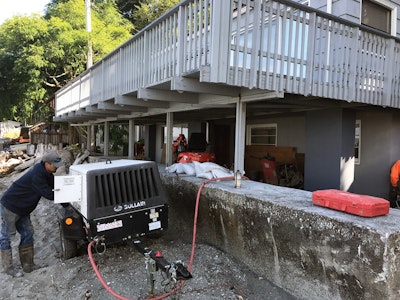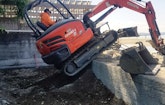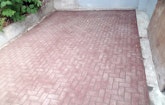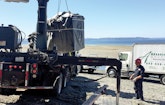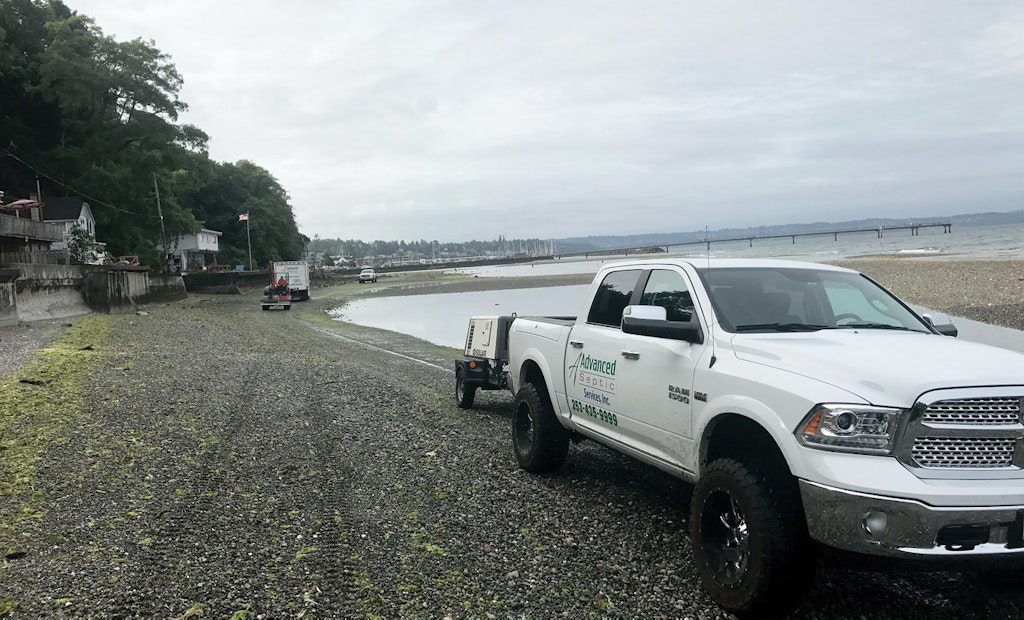On the edge of Puget Sound in Washington are a handful of homes that wouldn’t be possible today. When the tides are right, seawater comes within a few feet of the house walls.
Local codes forbid new construction in sensitive sites like these, but a new system can be installed for an existing home. That was the challenge for A Advanced Septic Services.
It was a job the company came across by accident when it was called in to inspect the system on a home at the base of a 100-foot bluff. What A Advanced found during the pumpout and inspection was an old homemade tank with missing baffles.
“The house was vacant when we came, unoccupied for some time. But with a new wastewater system, it was worth a tremendous amount,” says Andrew Gunia, who owns A Advanced.
Several system designers passed on the project because they thought a solution was not possible. But for Keith Pelzel and his partner Brian Potucek at Westside Septic Design, talk of an impossible project is motivation to solve it, Gunia says. And they did.
The system
Water leaves the house in a 3-inch Schedule 40 pipe and flows 5 feet to a 500-gallon concrete tank. That and the other tanks in the system came from Evergreen Pre-Cast of Sumner.
“We needed to use concrete because at certain times of the year the tidal waters are higher than the elevation of the finished grade. There’s a bulkhead that keeps much of that out, but during what we call ‘king tide,’ the water will be on top of the tanks,” Gunia says.
The first tank in the chain is intended only to settle solids, not for pretreatment, so wastewater moving into the bioreactor is ideally still aerobic.
A 3-foot run of 4-inch pipe takes water through a SaniTEE filter and into a 1,000-gallon tank holding a BioBarrier membrane bioreactor from BioMicrobics. From the bioreactor, water flows a few feet into a 1,000-gallon pump tank. An Orenco Systems PF2005 turbine pump pushes water through an HD Fowler continuous flush headworks and to the absorption field, comprised of 359 linear feet of Netafim split into two arrays.
The Netafim wraps around two sides of the three-bedroom home. Technicians dug out the existing soil and hauled in 20 yards of washed sand to cover the Netafim. Sand was settled with a plate compactor. His company learned years ago while building mound systems that this will not damage the lines and it prevents sagging as sand settles naturally, Gunia says.
On top, technicians put 2 inches of cover, filter fabric, and then 2 3/8-inch plastic pavers to bring the installation back up to grade. These are anti-flotation pavers that are permeable. That was something Gunia and his team insisted on having. Without those, there was always a chance that the next homeowner would choose some covering that compromised the dripfield.
A 6-inch concrete slab was poured on top of the tanks to prevent them from floating. This wasn’t on the original design, but as the project progressed, everyone realized that the membrane and pump tanks might operate when nearly empty, especially if the next buyer used the home as a weekend or vacation residence. Although a bulkhead (or sea wall) keeps most of the salt water off the property, during the annual and very high king tides, water could flow past the bulkhead.
For the project, A Advanced used a trio of Kubota mini-excavators and a 1999 Kenworth truck with a dump box.
Challenges
The King County Health Department wanted to guard against any possibility of a leaking tank, so Pelzel came up with the idea of wrapping the tanks in plastic. Liners common for sand filters are not rated for saltwater exposure, so the choice was a special 30 mL liner. The A Advanced crew wrapped the tanks at the shop. That way technicians were able to lower the tanks into the water table without the risks of the plastic being punctured or sagging, Gunia says.
Because installation space was so tight, the crew had to remove two sets of stairs, one to an upper balcony and another to a higher terrace. Concrete around the base of the house was also removed to allow installation of the tanks and dripline. A Advanced has an architectural division, and that group built new stairs when the system was in the ground.
Technicians reached the property by driving about a quarter mile across the beach from a city park. It’s a common route for other service providers, but the scheduling for A Advanced had to be precise because tide times change every day. Every working day, the crew lost about half an hour as the time of low tide shifted on the clock.
On several days during the two-week construction, technicians had to pull all the equipment off the site and remobilize the next morning. “We left a compressor outside the bulkhead one night only to realize the tidal waters had come within a couple of feet of that,” Gunia says.
Crews didn’t have to wait for low tide to move gear, only water low enough to allow driving. “In fact, we wanted moisture on the beach to carry the weight of the truck,” he says.
Yet the path was narrow. While trying to turn around one day, a vacuum truck driver backed too far at the wrong place, and his wheels dropped into a hole while the tide was coming in. A dump truck headed that way to hook on and pull the pump truck out, but it provided some tense moments. “We suspect that at some point it would have floated,” Gunia says with a laugh.
While technicians were breaking concrete at the start of the job, they left one of the mini-excavators parked on top of the bulkhead wall. It was the safest spot because there was no room behind the bulkhead and next to the house.
Approval of the work took about 18 months because this was a nonconforming use. The owners handling the estate were very supportive, Gunia says. They showed up at every meeting and did their best to apply pressure to King County to approve the work.
At approximately $132,000, this was an expensive project. But it meant the house now has value as a residence instead of as only a demolition project.
“This property has an incredible view of the Olympic Mountains,” Gunia says. “Whales swim in front of it. You cannot reproduce this under today’s code requirements and restrictions, let alone even consider building at the bottom of a bluff like this.”
“There will be no more homes like this,” he says. “There will only end up being less.”
Because of the team Gunia worked with, there won’t be fewer homes just yet.
